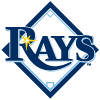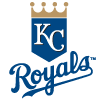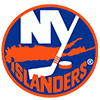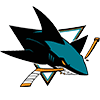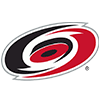Last time out, I looked at some players that rebuilding clubs might be able to pick up at a discount as they look to acquire keeper assets. This week, with the halfway point of the season rapidly approaching, I want to look at a class of players at the opposite end of the spectrum – hitters and pitchers enjoying breakout campaigns in 2018, forcing fantasy GMs to consider whether they will continue to be elite producers through the second half of this season and into the future, or whether they've already peaked as are ideal sell-high candidates.
If you're in the thick of a title hunt right now, it's very likely one or more of the players listed below helped get you there, putting you in a tough position. Do you hang onto the guy who may have become one of your favorite players due to his big first half, expecting more of the same, or do you cash out now and try to trade him for a king's ransom to a rebuilding squad? And if you're one of those rebuilding clubs, how much faith should you put in these surprising performers? Can they be foundation pieces for your next competitive roster, or will banking on a repeat from them doom you to another second-division finish next season?
The 12 players listed below have earned significantly more in 12-team mixed 5x5 roto leagues heading into play Friday than they were projected to contribute back in the spring. Two players
Last time out, I looked at some players that rebuilding clubs might be able to pick up at a discount as they look to acquire keeper assets. This week, with the halfway point of the season rapidly approaching, I want to look at a class of players at the opposite end of the spectrum – hitters and pitchers enjoying breakout campaigns in 2018, forcing fantasy GMs to consider whether they will continue to be elite producers through the second half of this season and into the future, or whether they've already peaked as are ideal sell-high candidates.
If you're in the thick of a title hunt right now, it's very likely one or more of the players listed below helped get you there, putting you in a tough position. Do you hang onto the guy who may have become one of your favorite players due to his big first half, expecting more of the same, or do you cash out now and try to trade him for a king's ransom to a rebuilding squad? And if you're one of those rebuilding clubs, how much faith should you put in these surprising performers? Can they be foundation pieces for your next competitive roster, or will banking on a repeat from them doom you to another second-division finish next season?
The 12 players listed below have earned significantly more in 12-team mixed 5x5 roto leagues heading into play Friday than they were projected to contribute back in the spring. Two players are conspicuous by their absence, however, namely Nick Markakis and Matt Kemp. While they are among the first half's biggest surprises, as older players their value on the trade market in keeper and especially dynasty formats is kiboshed. Unlike a younger player, whose best years may be ahead of them, it's basically impossible to get a reasonable return on a breakout player in their mid-30s, at least relative to their current stats. In such cases, you're almost forced to ride their hot streak all the way to the end, unless you're willing to trade them for a lot less than their production suggests they should fetch.
Jesus Aguilar, Mil (earned $19, projected -$8): The 27-year-old has taken full advantage of the playing time opened up by Eric Thames' injury, and through 64 games Aguilar has powered his way to a .301/.364/.580 slash line with 14 homers and 47 RBI. Digging deeper into his numbers reveals lots of positive indicators as well – his strikeouts are down, his walks are up a smidge, and he's hitting more fly balls while holding his hard-hit rate steady. The long-time Cleveland farmhand also showed flashes of this upside as he rose through the ranks – he slugged 30 HR in 137 games for Triple-A Columbus in 2016, and posted a .304/.395/.511 slash line in 118 games for Columbus in 2014 – so his first-half performance is less shocking than it might seem. With Thames now healthy, and Ryan Braun also needing playing time, Aguilar probably won't start six games a week, which makes him a prime trade chip for a team in the title hunt, but his 2019 outlook contains some optimism too for any team thinking about acquiring him in a rebuild. While Braun's onerous contract probably isn't going anywhere, the 31-year-old Thames' affordable deal could easily see him peddled off over the winter, handing Aguilar the starting job at first base for next season.
Ozzie Albies, Atl (earned $23, projected $2): In retrospect, Albies' 15 home runs between Triple-A and the majors last year were a bigger sign of things to come than most people were willing to credit, as he's already eclipsed that total through 73 games this season. The frustrating thing for evaluating the 21-year-old's value, both in the present and down the road, is that he's not running. Sure, you don't get as many chances to steal when 41 of your 78 hits go for extra bases, but the kid who went 29-for-32 on the basepaths in 2017 is just 6-for-9 through the first three months of 2018, and it's not like the Braves are afraid of green lights – just ask Ender Inciarte. If Albies can add more consistent speed to his power, he's got Jose Altuve/Jose Ramirez-like fantasy upside, but until he proves he can solve big-league batteries, his ability to contribute in that crucial category remains theoretical. Still, that upside makes him a potential centerpiece for a win-win dump deal. A contending team that was counting on Albies to chip in 20 or so steals should be willing to trade him for more secure speed assets (and a boatload of other short-term value), while a rebuilding team can dream on a possible elite fantasy producer in a year or two.
Trevor Bauer, Cle (earned $24, projected $3): It would be so, so easy to write Bauer's first half off as a fluke. His career has been an unbroken string of ERAs above 4.00 and WHIPs above 1.30 to date, making his current 2.50 and 1.09 marks stick out like sore thumbs. His 2018 breakout was preceded by an encouraging 2017, however, and while his final fantasy stats didn't reflect it, the right-hander saw a big spike in his strikeout rate last year thanks to increased reliance on his curveball. He's doubled down on that offspeed approach through the first half of this season, still spinning that curve about 30 percent of the time but throwing his fastball a career-low 40 percent of the time, with the extra pitches going to a slider he'd actually abandoned in 2016. Putting aside the specifics of his pitch mix, though, the mere fact that he's making successful adjustments is a big step for the 27-year-old, who was effectively run out of Arizona on a rail after only four big-league starts due to his supposed pig-headedness. Given his first-round pedigree and deep, effective arsenal, I think it's more likely than not Bauer keeps up this pace, or something very close to it, which presents a tough dilemma for contending teams. If you can deal him for a more secure ace like Max Scherzer or Chris Sale, you pretty much have to do it, but it may up being less of an upgrade in the second half than you're expecting. If you're rebuilding, of course, you can't pass up a chance to acquire a possible SP1 in his mid-20s right before his fantasy value shoots through the roof.
Patrick Corbin, Ari (earned $17, projected $2): A month ago, the lefty was everyone's darling. He seemed all but unhittable, and the new humidor at Chase Field was humming (and dorring?) along, suppressing homers and making Paul Goldschmidt's life miserable. If you traded Corbin when he had a 2.12 ERA in early May, congrats, it looks like you timed the market perfectly. In his seven starts since, he's posted a 5.14 ERA and seen his fastball velocity decline, although his 50:14 K:BB in 42 innings over that stretch remains excellent. If you're still holding onto him, well, it's not like his trade value has completely cratered. The fact that he's still generating whiffs is a plus, but with the humidor effect starting to look less drastic, Corbin's fantasy ceiling also seems a little lower than it did not too long ago. Despite his big overall first half, he's back to seeming more like an interesting secondary asset in a dump trade than a centerpiece, and the velocity droop in particular would make me wary about trading for him as a key part of a rebuild.
Didi Gregorius, NYY (earned $23, projected $9): Didi's season has been a roller coaster so far. He ripped off a 1.286 OPS through his first 25 games, then stumbled to a .321 OPS (no, that's not a typo) through his next 21 games, and now he's riding a .851 mark through his last 20 contests. The latter performance is probably closer to his "true" level, but the hot start and a career-high HR and RBI pace still have him miles ahead of his projected value from the spring. With a player like Gregorius, it's important not to get too caught up in his perceived "upside". That April performance was too small a sample to assume he'll ever come close to repeating it, or repeating it over a longer stretch, and his power numbers are also obscuring the fact that some of that $23 in earned value comes from the career-high nine steals he's already swiped. While the speed is a nice bonus, it's come on 14 attempts, and given the low success rate there's no guarantee he'll be allowed to keep running. There's still a lot to like about Gregorious' profile, and athletic middle infielders in their mid-late 20s are more than capable of big offensive improvements, but he's not a player I'd have qualms about trading away as part of a title push.
Mitch Haniger, Sea (earned $23, projected $6): Haniger's next homer will establish a new career high for the 27-year-old, and while a .233 June has dragged down his batting average, there's no reason to think his per-game performance is going to suffer any sort of drastic correction in the months ahead. The key part of that sentence, of course, is "per-game"; Haniger didn't break out like this last season only because he couldn't stay healthy. In fact, his .836 OPS so far in 2018 is actually a few points lower than last year's mark. Keeping or acquiring Haniger is purely an exercise in risk tolerance. His 2017 stints on the disabled list and spotty minor-league career may have him labeled as injury-prone in some minds, but he did suit up for 163 games across three levels in the Arizona system in 2016, and players growing out of early-career injury issues is not a new phenomenon. He's a player where the leverage probably tips in favor of a rebuilding club in a trade – a team in the thick of the race this year will want a more secure asset, putting additional pressure on them to deal him before his next "inevitable" DL stint.
Miles Mikolas, StL (earned $18, projected $1): Incredibly enough, Mikolas has been the one consistent, reliable arm in the St. Louis rotation this season – not bad for a guy who'd been overseas since 2014 trying to put a career together. While pitching for a team like the Cards gives him a reasonable win expectation, a 6.6 K/9 puts a severe limit on his fantasy upside in any format that uses strikeouts, as he's working in an environment where the league average is 8.6. If you're in an old school 4x4 league, Mikolas might be worth pursuing in a rebuild, but in 5x5 you'll need some big-time aces or high-octane relievers to make up for his shortcomings. Mikolas is only 29 years old, though, so he might well be able to provide solid innings for a few more seasons. In fact, his 2018 is looking a lot like Kyle Hendricks' 2016, which should give you an idea of the likely future course of his career, and an idea of how to value him in a deal.
Charlie Morton, Hou (earned $22, projected $4): He showed us what he could do last year, and we just didn't believe him, so Morton's gone out and been even better in 2018. In our collective faces, I guess. The thing is, he'll turn 35 years old during the playoffs, so no matter how much harder he's throwing and how much better the results are, for dynasty league purposes, his future value seems very uncertain. Could he give you another couple of seasons of this level of performance? Absolutely. Could his arm suddenly fall off next spring? Yup. Keeper-league GMs, who have smaller windows for their turnarounds, could certainly view him as a key piece in a dump trade with an eye on 2019, however.
Rick Porcello, Bos (earned $18, projected $6): Porcello's numbers have fallen back to earth after his ridiculous April. Over his last 10 starts, he's got a 4.27 ERA and 1.27 WHIP, but he's also won half of those outings thanks to having the Red Sox offense backing him, and that's not going to change. Porcello remains simultaneously maybe the most over-rated and under-rated pitcher in the league, depending on your perspective. He didn't deserve his 2016 Cy Young, sure, but he's more than a bum who got lucky for one year, which is how some people seem to view him after that win. Basically, he's become the Marisa Tomei of baseball. Like Bauer and a lot of other pitchers, Porcello's career-high 8.5 K/9 this season has been fueled by an increase in his usage of off-speed pitches, in his case his slider – he's throwing it a career-high 26 percent of the time, compared to a career-low 48 percent for his fastball. He's still only 29, and while he'll never be a fantasy ace, a solid mid-rotation guy with an elite offense at his back still has plenty of value. That profile makes him a lot more interesting to teams chasing a title than ones rebuilding, however. Regardless of his salary, no one's likely to give up a true stud for Porcello. In fact, his best use in a trade might be as an extra bit of "future value" that a non-contending team gives up to induce their trading partner to part with truly premium keeper assets. You wouldn't trade Corey Kluber to get Porcello, but would you include a bargain-priced Porcello in a deal to get back a Vlad Guerrero Jr., or a Forrest Whitley?
Eddie Rosario, Min (earned $32, projected $12): Of all the players on this list, the most was expected from Rosario coming into 2018, but he's made the jump from solid contributor to elite producer – at least through three months. He's on pace for career highs in every 5x5 fantasy category, and for that matter plenty of non-traditional categories too. In fact, Rosario's been a top-10 hitter and top-12 overall producer so far, which makes him a very tough player to consider parting with if he's carried you to the top of the standings. How do you get fair value for a guy who's given you comparable (actually, slightly better) numbers to Nolan Arenado or Manny Machado at a fraction of the price? If Rosario does establish himself as one of the game's elites, his current salary is almost certainly a bargain. On the other hand, if he is being dangled as the big name in a massive dump deal, can you count on him to keep it up? At 26 years old he's heading into his prime, but a .344 BABIP and stagnant walk rate could be seen as ominous. If you pay through the nose for Rosario expecting him to become Machado, and he only ends up being Adam Jones instead (not that Jones wasn't valuable in his mid to late 20s, but he wasn't first-round valuable), you might end up feeling like you got hosed. Personally, if I'm rebuilding, I want upside, so I'm willing to take that risk, but it's the kind of decision that can impact your team's fortunes for years to come.
Blake Snell, TB (earned $26, projected -$2): Of all the players I ended up not getting any shares of this year, Snell is the one I regret most, simply because I knew in my gut this was the year he was going to put it together. The strikeout rate is back over 9.0 K/9, the walk rate is manageable, and he's been the one rock in a Rays rotation otherwise made up of sand. For all those good things, though, he's also got a disparity of more than a full run between his ERA and his FIP and xFIP, and Snell may well be one of those players who's still enjoying a breakout – just one that isn't quite as awesome as it appears on the surface. That makes him an excellent player to deal away for a safer ace if you're going for it this season, and a dangerous player to acquire if you're counting on him to become that safer ace down the road. That's not to say you completely should stay away from him if you're rebuilding, though. Snell's still a 25-year-old lefty with a massive ceiling given his arsenal, and he could easily keep taking steps forward in future seasons with his command and control, dragging that xFIP down to meet his ERA rather than seeing the numbers converge in the other direction. Much as I love Snell, though, if I had the choice between him and Bauer to provide an anchor for next year's rotation, I'm choosing Bauer.
Ross Stripling, LAD (earned $18, no projection): So little was expected of Stripling coming into 2018 that we didn't even have an initial projection for him when our preseason magazine went to the publisher. In fact, our write-up on him actually says, "...it would likely take multiple injuries to the Dodgers' starting rotation for him to get a shot as a starter..." Well, here it is in June, Clayton Kershaw, Rich Hill and Hyun-Jin Ryu have combined for only 21 starts, and Stripling has become the Dodgers' first-half ace. In fact, since moving into the rotation in early May, he has a 1.87 ERA, 0.91 WHIP and a frankly obscene 66:4 K:BB through 53 innings. While the strikeout rate has no precedent when you look back at his minor-league career, Stripling has flashed elite control in the past, posting a 1.8 BB/9 at Double-A in 2013 before Tommy John surgery sidetracked his development. Beyond that, though, there's really no reason to expect him to keep this up. Every year there are players who emerge from absolutely nowhere to provide huge profits, and while regression may not reduce them to complete irrelevance when it hits, regression is almost always on the horizon. You know it, and your potential trade partners know it. That means, unless the player has some sort of prospect pedigree to back up his explosion, it's extremely hard to find fair value for them in a deal. Stripling fits this description to a tee. The range of outcomes for the right-hander over the second half is too volatile for contending teams to count on him, but at the same time the upper end of that range is very, very enticing. The range of outcomes in 2019 and beyond is also too volatile for any rebuilding club to be comfortable accepting him back as a key part of a big trade. The short version here is that, as with an older hitter like Markakis, if you were lucky enough to grab Stripling, there's probably no way to reasonably "sell high" on him in a competitive keeper or dynasty league.













